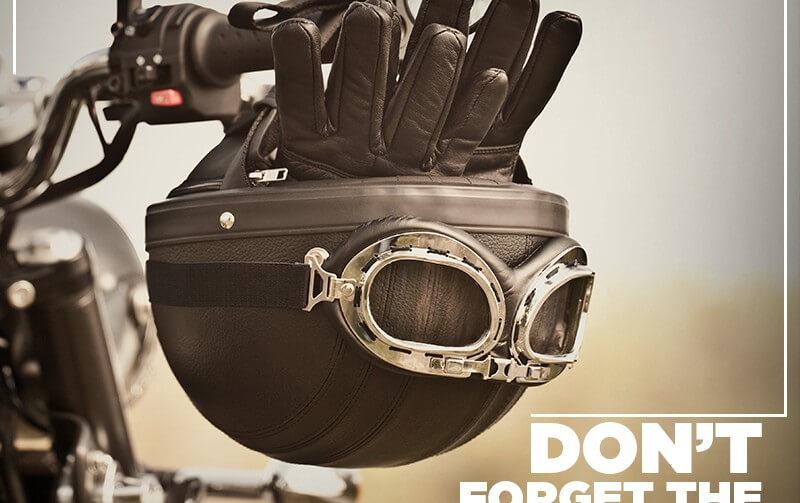Driving safe on the busy roads is of paramount importance today. Wearing a helmet when you drive a two-wheeler is the most efficient way to ensure your safety in case of any mishap happening while you drive.
What are the components of this safety gear - Helmet?
A helmet should have the following components:
- Rigid outer shell – It absorbs the energy impact & distributes the force of impact to protect your skull.
- Protective padding – This layer basically provides comfort padding to your head & protects your head from damage due to an accident.
- Strapping system – Your helmet must have a tightly fastened chinstrap so that your helmet is properly fitted on your head.
- Face shield – A face shield is a glass that covers your face. This is essential to protect your face from any damage & prevent facial bone fractures in an accident.
- Additional face protection – This is the lower part of your helmet which protects your jaw and prevents any direct blows on your chin.
What are the laws associated with wearing a helmet?
Section 129 of the Motor Vehicles Act 1988 states the following laws for wearing a helmet while driving a two-wheeler on Indian roads:
- Every person driving or riding a motor cycle should wear a helmet. The only exception is for Sikhs, who are exempted from wearing a helmet if they are wearing a turban (not parna, patka etc.) while driving or riding a motor cycle.
- The helmet should conform to the following specifications:
- It should be according to the standards mentioned by Bureau of Indian Standards.
- Helmets for the riders should meet or exceed the minimum performance requirements as laid down by the Indian Standards.
- The helmet should bear an ISI mark, which certifies that the protective gear meets all the requirements of IS: 4151.
- The ISI mark must have the following details:
- It should be a single colored symbol with a width-to-height ratio of 4:3.
- It should have the unique IS number on the top. It is IS: 4151 for helmets.
- Below the symbol must be a license number, which represents the particular manufacturer.
- The chin strap should be properly used to fasten the protective gear to the driver’s/rider’s head. It should not be unstrapped or loosely strapped.
- Pillion riders are also required to wear a helmet while they are on the motor cycle.
What is the punishment for any offense related to helmets?
Under section 177 of the Motor vehicles Act ’88, any person not following the helmet wearing rules is liable to be punished. The fine for the first offense may extend up to INR 100 and for any other subsequent offense, the fine may extend up to INR 300.
Apart from taking these essential tips, you should also invest in a comprehensive bike insurance to secure your finances in case of any unforeseen incident. Explore and avail
bike insurance with Bajaj Allianz today!
 Service Chat:
Service Chat: 

